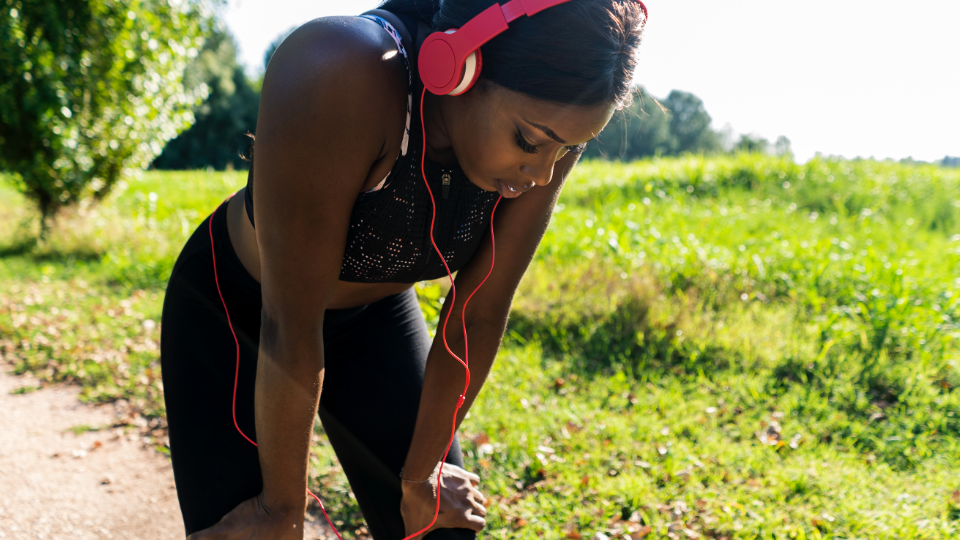For the first time since 2008, new U.S. federal guidelines for physical activity have been released.
The guidelines recommend that all adults engage in at least 150 minutes of physical activity that elevates the heart rate each week (1). The good news is that any activity during your day counts toward the total, and just 22 minutes a day can offer dramatic health improvements. Experts no longer believe that exercise needs to be in bouts that are 10 minutes or longer to gain health benefits.
The reasons to add physical activity to your routine extend beyond weight loss and general fitness. Focusing on the immediate benefits may motivate people to move more and sit less. Here are seven benefits beyond weight loss to add physical activity to your daily routine.
1. Build Lean Body Mass
Exercise, such as strength and resistance training, helps build and maintain lean body mass. When you lose weight, some of that weight loss may include a loss of muscle and bone density. Research shows that approximately 25 percent of lost weight comes from lean body tissues (2). Intake of proper nutrients — in particular, an adequate amount of high-quality protein — is key to maintaining and building muscle while losing weight (3).
2. Improve Metabolism
A faster metabolism, measured by resting metabolic rate (RMR), allows the body to burn more calories while at rest. Exercise is associated with increased energy expenditure, promoting an increase in RMR (4). Since fat-free mass, such as muscle and organ tissue, is more metabolically active than fat mass, any increase in muscle mass may support improvements to your metabolism.
3. Relieve Stress
People consistently feel less stressed and more energized after exercise. Several research papers link exercise and physical activity to a decrease in stress and an improved sense of well-being. The American Psychological Association reports that 64 percent of adults who say they have low stress engage in exercise at least once per week, while those who don’t exercise report high stress levels much more frequently (5).
4. Develop a Healthier Gut
Although understudied until recently, the effects of exercise on the gut microbiome are emerging. Because the gut microbiome is largely affected by dietary habits and is unique to each individual, it can be difficult to make conclusions based on exercise alone. However, in one study, researchers found that athletes generally have a greater diversity of gut microbes (6). Microbe diversity has been linked to positive benefits to immune and digestive health, intestinal barrier function, energy balance, and metabolism (7).
5. Improve Sleep
Sleep has been shown to respond positively to physical activity. Research indicates that both sleep quality and sleep duration are improved with regular exercise. In studies of adolescents and adults, those with sleep problems greatly benefited from aerobic and resistance exercise (8, 9). Even those who regularly suffer from insomnia have reported increased sleep duration by an hour and 15 minutes each night following an exercise program of 30 minutes four days per week (10).
6. Boost Memory and Focus
Exercise has been shown to increase memory and cognition both directly and indirectly. Not only does it stimulate the release of growth factors that encourage the growth and survival of new blood vessels in the brain, it also improves mood and sleep and reduces anxiety and stress, all of which lead to improved memory and cognition.
7. Bolster Immune Health
Regular moderate exercise has a protective effect on the immune system and improves the body’s response to pathogens. This reaction is thought to be mediated by a reduction in visceral fat mass and the anti-inflammatory effect that occurs with each bout of exercise (11, 12).
All these health benefits are achievable with regular physical activity — and again, everything counts. Even just 22 minutes a day is sufficient, whether it’s resistance or aerobic exercise. The most important factor is consistency. Finding ways to incorporate a little extra activity into your day can have a dramatic effect on your overall health and well-being.
References
- Peircy KL, Troiano RP, Ballard RM, et al. The physical activity guidelines for Americans. JAMA. 2018 Nov; 320(19): 2020-28.
- Weinheimer EM, Sands LP, and Campbell WW. A systematic review of the separate and combined effects of energy restriction and exercise on fat-free mass in middle-aged and older adults: implications for sarcopenic obesity. Nutr Rev. 2010 Jul; 68(7): 375-88.
- Cava E, Yeat NC, and Mittendorfer B. Preserving healthy muscle during weight loss. Adv Nutr. 2017 May; 8(3): 511-19.
- Stiegler P and Cunliffe A. The role of diet and exercise for the maintenance of fat-free mass and resting metabolic rate during weight loss. Sports Med. 2006; 36(3): 239-62.
- Anderson NB, Belar CD, Breckler SJ, et al. Are teens adopting adults’ stress habits? Amer Psych Assoc 2014; 1-47.
- Clarke SF, Murphy EF, O’Sullivan O, et al. Exercise and associated dietary extremes impact on gut microbial diversity. 2014 Jun; 63: 1913-20.
- Stephens RW, Arhire L, and Covasa M. Gut microbiota: from microorganisms to metabolic organ influencing obesity. Obesity. 2018 May; 26(5): 801-9.
- Yang PY, Ho KH, Chen HC, et al. Exercise training improves sleep quality in middle-aged and older adults with sleep problems: a systematic review. J Physiother. 2012 Sep; 58(3): 157-63.
- Mendelson M, Borowik A, Michallet AS, et al. Sleep quality, sleep duration and physical activity in obese adolescents: effects of exercise training. Ped Obes. 2016 Feb; 11(1): 26-32.
- Reid KJ, Baron KG, Lu B, et al. Aerobic exercise improves self-reported sleep and quality of life in older adults with insomnia. Sleep Med. 2010 Oct; 11(9): 934-40.
- Brolinson PG and Elliott D. Exercise and the immune system. Clin Sports Med. 2007 Jul; 26(3): 311-9.
- Walsh NP, Gleeson M, Shephard RJ, et al. Position statement. Part one: Immune function and exercise. Exerc Immunol Rev. 2011; 17: 6-63.





